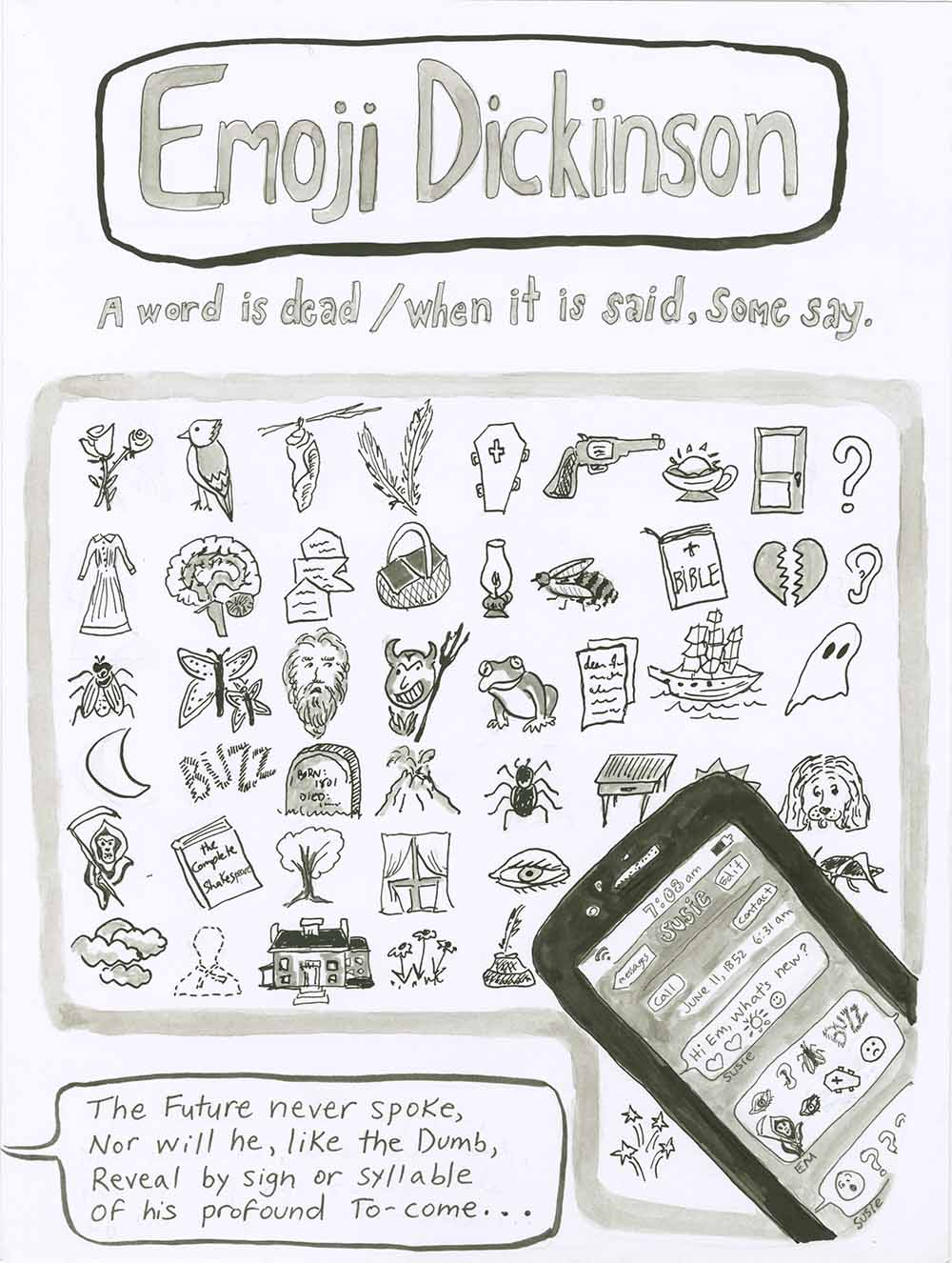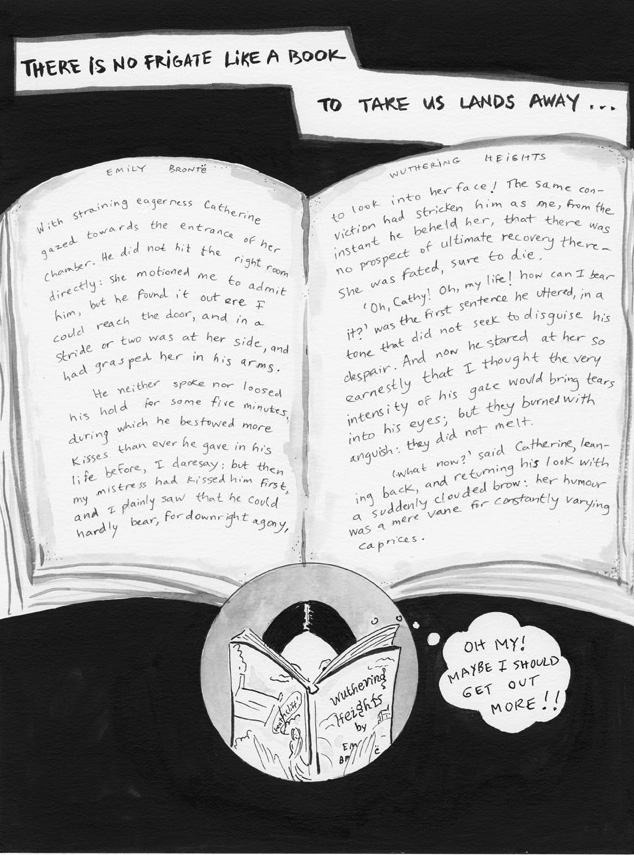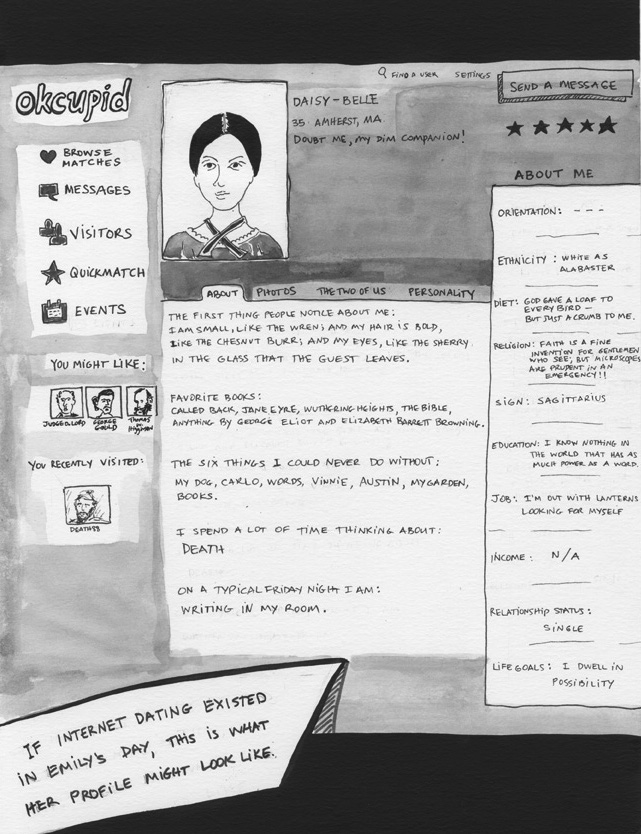I ordered this book on a whim after coming across it in an article posted on Facebook (which is appropriate, given the subject matter of the book). The article, entitled “Why Moody Teenagers Love Emily Dickinson” (BBC), quotes the author of The Slanted Life of Emily Dickinson, Rosanna Bruno:
“We were taught that she was this reclusive spinster who lived with her family, dressed all in white, and wrote in her room all day”, recalls artist Rosanna Bruno of her high school introduction to the poet in the 1980s. Even then, Bruno felt that the mythology of the poet didn’t really mesh with the poems. “It seemed so incongruous to what she wrote”, she says. “Have you ever heard Helen Mirren reading Wild Nights!? You really have to rethink Dickinson as a reclusive spinster after that rendition.”
Indeed, Bruno has hit on something here. Dickinson is one of those writers, like Poe or the Brontës, whose lives—or should I say whose “images”—come dangerously close to eclipsing their work. I, too, have been guilty of trying to sell Emily Dickinson to teenagers by telling them intrigues about her life. But as I have learned more about her, I have learned more about her humorous side, her playful side, her wicked side, for lack of a better word. And she is way more interesting than our portrait of her as the recluse in a white dress. Rosanna Bruno captures in cartoons what Emily Dickinson’s life might have been like with some of our twenty-first century concerns (and social media accounts). The result is a funny graphic novel that I think Emily Dickinson herself might have enjoyed.
You might need to click on this for the full image to enjoy the effect, but anyone whose tried out writing up classic literature with emojis (that is a thing), will enjoy this:

I enjoyed the juxtaposition of one of my favorite books and my favorite poet:

But my favorite might be her OK Cupid profile, though the Yelp reviews were pretty awesome, too.

Bruno has clearly researched Dickinson’s life, and there are plenty of Easter eggs for those who know a lot about the poet’s life. The artistic renderings of Dickinson’s home and environment are done with a careful eye as well. What shines through most clearly is that Bruno is a fan of Emily Dickinson’s and she had a lot of fun with Dickinson’s poetry as she wrote this book.
Anyone who is a fan of Emily Dickinson’s will probably enjoy this book, and it also has an audience with folks who enjoy Roz Chast’s cartoons (both Chast and Alison Bechdel get fan shout-outs in this book).
Check out Bruno’s website for more images from the book.
Rating:






